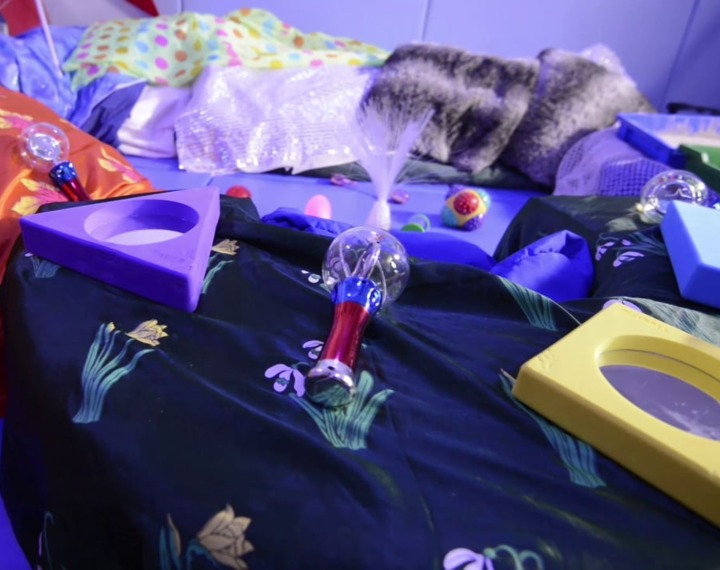The Benefits Of Adding A Sensory Room To Your Care Home
 Sensory rooms are specially designed spaces that combine a range of items used to help gently stimulate the senses (sight, sound, touch, and movement). For people with learning difficulties, developmental disabilities, sensory impairments, or dementia, sensory rooms can be highly beneficial.
Sensory rooms are specially designed spaces that combine a range of items used to help gently stimulate the senses (sight, sound, touch, and movement). For people with learning difficulties, developmental disabilities, sensory impairments, or dementia, sensory rooms can be highly beneficial.
The concept of sensory therapy originated in The Netherlands in the 1980s. Originally, sensory therapy was used for adults with learning difficulties. Today, however, it’s been proved to be beneficial for people of all ages with or without disabilities. These include babies and toddlers, people with cognitive and physical impairments, such as autism or dementia, for example, stroke, and vision or hearing limitations.
No two sensory rooms should be the same, each should be specifically designed to meet the needs of the person using it. Or, if the sensory room is shared, it should contain different areas with different forms of stimuli. The idea of sensory rooms is to offer a safe, mood-enhancing environment, improving quality of life for care home residents with all manner of health conditions.
There are various benefits of sensory rooms, some of the best of which are listed below.
Increased communication between residents and carers
One of the main benefits of sensory therapy is that it is able to help reduce an individual’s fears, enhancing the trust that they have in their carers. Because most residents feel at ease while in a multi-sensory space, they are more likely to open up to their carer, deepening the relationship between them and their carer.
A better understanding of the environment
Many people with cognitive impairments, such as autism and dementia, struggle to understand the world around them. This can cause them to feel frightened and unsure about things and can make interacting with others difficult. While in a sensory room, residents receive a stream of stimuli that automatically increases their awareness of their surroundings.
Studies have shown that on average, most people touch around 300 different surfaces every half an hour. Whereas someone with profound cognitive impairment, such as Alzheimer's Disease, will touch only three surfaces. This shows just how sensory deprived many care home residents can be and how important it is that they are able to engage their senses.
Improved behaviour and mood
Research has shown that sensory environments can be calming for individuals with aggressive behaviour. It is thought that the non-threatening multi-sensory environments help people with cognitive impairments to release tension, preventing them from becoming aggressive. The reason that a lot of people with autism and dementia become agitated and aggressive is because they don’t have an outlet for their emotions. However, multi-sensory spaces offer them an outlet, helping to prevent aggressive outbursts and other mood swings.
If your care home doesn’t have a multi-sensory space, perhaps it could be worth looking into creating one, like Cedar Care Homes have created for residents, allowing them to benefit from this incredible form of therapy.
To learn more about how to create a sensory room for your residents, check back next week.





